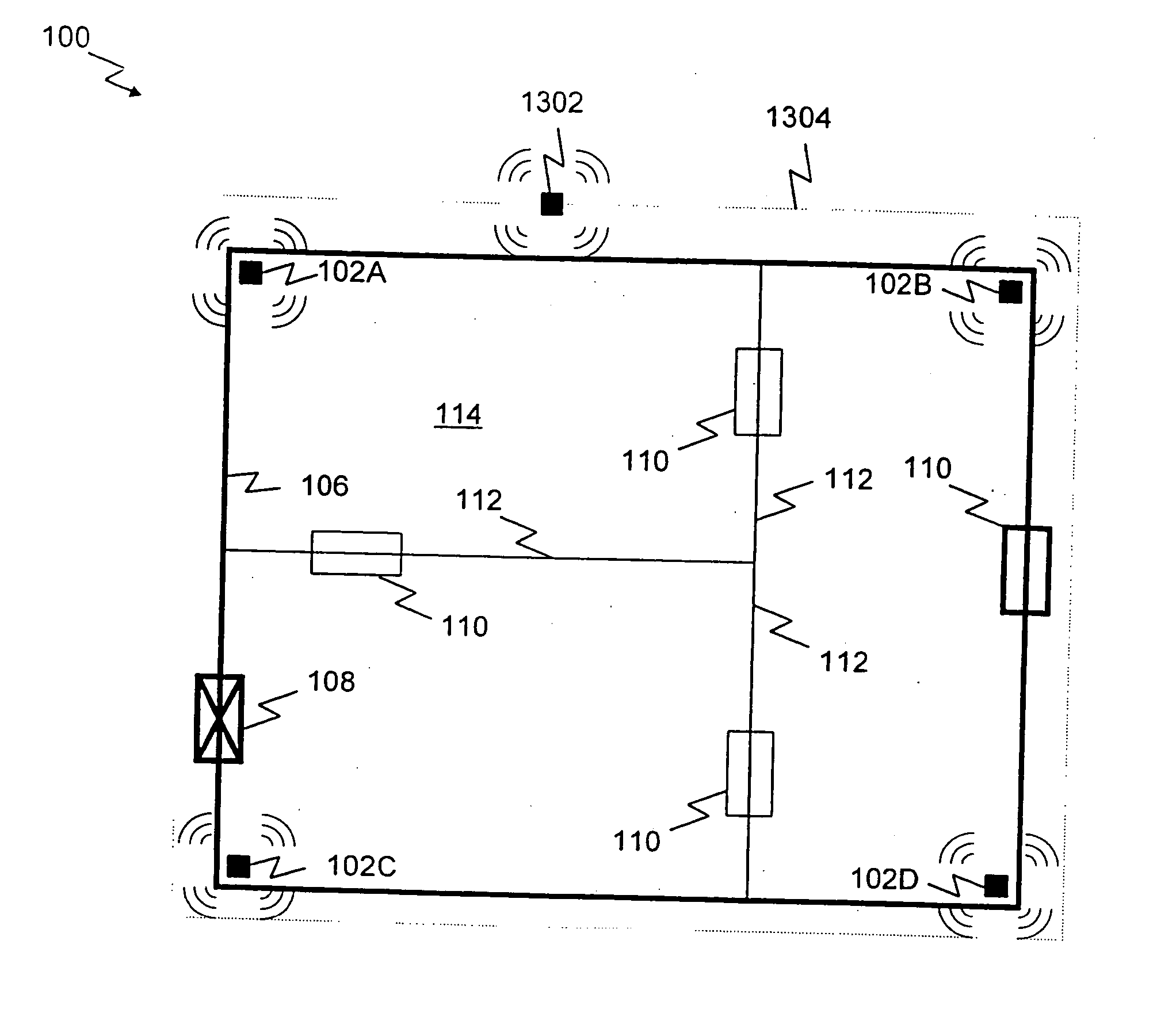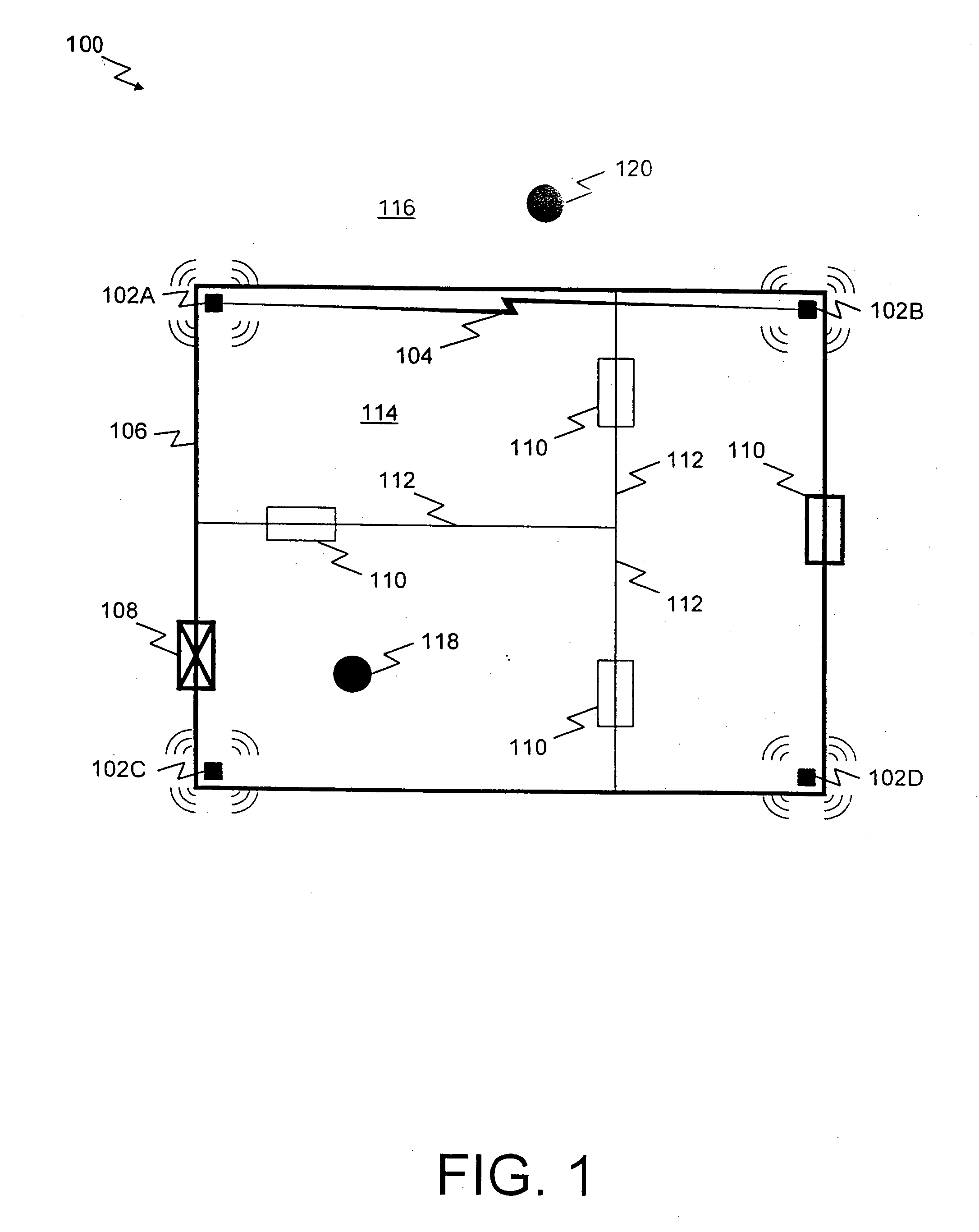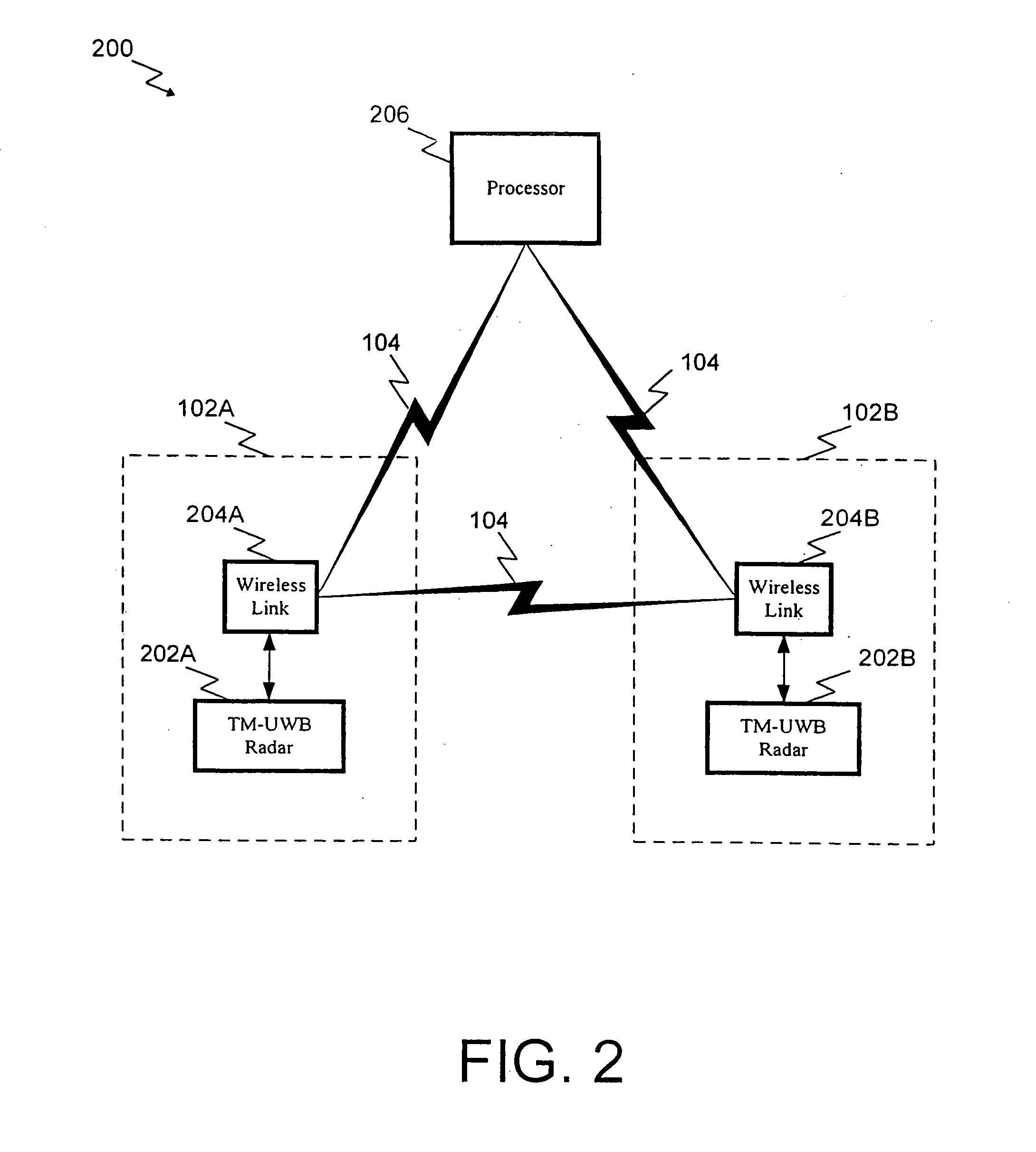System and method for intrusion detection using a time domain radar array
a time domain radar and array technology, applied in the field of radar motion detection, can solve the problems of low accuracy, lower false alarm rate, and inapplicability of conventional narrowband radars arranged in sparse arrays, so as to improve performance, improve angle and range resolution, and improve the effect of selection
- Summary
- Abstract
- Description
- Claims
- Application Information
AI Technical Summary
Benefits of technology
Problems solved by technology
Method used
Image
Examples
first embodiment
[0055] Synchronizing radars 202 can be accomplished in at least two different ways. In a first embodiment, a synchronization signal is transmitted between radars 202 via wireless links 204. In this embodiment, wireless links 204 are chosen which have high temporal resolution, on the order of ten picoseconds. This resolution is necessary to achieve the desired synchronization.
second embodiment
[0056] In a second embodiment, each radar 202 receives UWB pulses transmitted by the radar 202B via two paths. As described above, radar 202A receives forward scattering signal returns that reflect off reflective body 502. However, radar 202A can also receive UWB pulses that travel directly from radar 202B to radar 202A. These UWB pulses can be used by radar 202A for synchronization, so long as the distance between the radars is known. Those skilled in the art will recognize that the antenna 208B associated with radar 202B must be chosen such that its beam pattern provides for sufficient transmission in the direction of radar 202A.
[0057]FIG. 6 depicts intrusion detection system 200 operating in a second mode. In this mode, certain of the radars 202 are used for forward scattering purposes only, i.e., they transmit UWB pulses which are received by other radars 202, but do not themselves receive any signal returns. For example, in FIG. 6, radar 202B transmits UWB pulses that are recei...
PUM
 Login to View More
Login to View More Abstract
Description
Claims
Application Information
 Login to View More
Login to View More - R&D
- Intellectual Property
- Life Sciences
- Materials
- Tech Scout
- Unparalleled Data Quality
- Higher Quality Content
- 60% Fewer Hallucinations
Browse by: Latest US Patents, China's latest patents, Technical Efficacy Thesaurus, Application Domain, Technology Topic, Popular Technical Reports.
© 2025 PatSnap. All rights reserved.Legal|Privacy policy|Modern Slavery Act Transparency Statement|Sitemap|About US| Contact US: help@patsnap.com



